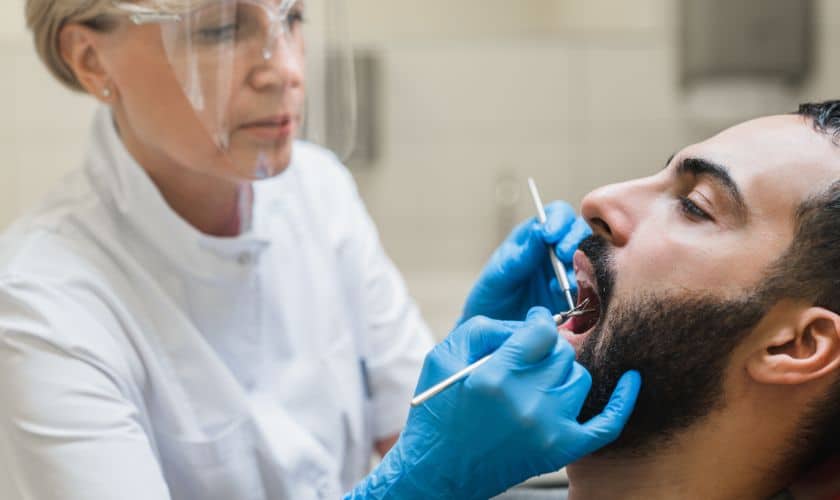
The Role Of Bite Splints And Mouthguards In TMJ Disorder Treatment
Do you find yourself constantly battling jaw pain, discomfort, and difficulty in opening your mouth? If so, you might be experiencing the unpleasant symptoms of Temporomandibular Joint (TMJ) Disorder. Fear not! There is a simple yet effective solution that can help alleviate these troublesome symptoms: bite splints and mouthguards.
What Is TMJ Disorder?
TMJ Disorder, also known as Temporomandibular Joint Disorder or TMD, is a condition that affects the joints connecting your jawbone to your skull. These joints, located on both sides of your head right in front of the ears, are responsible for various essential functions like chewing and speaking.
When these joints and surrounding muscles don’t work together correctly, it can lead to TMJ Disorder. The causes for this misalignment can be numerous – including teeth grinding (bruxism), arthritis in the joint area, stress-induced muscle tension or even injury to the jaw itself.
The Different Types Of Bite Splints And Mouthguards
Bite splints and mouthguards are essential tools for the treatment of TMJ disorders. They work by realigning the jaw, reducing stress on the temporomandibular joint, and alleviating pain associated with TMJ disorders.
There are different types of bite splints and mouthguards available in the market today. Each type is designed to address specific needs depending on the severity of TMJ disorder, sleeping habits, or lifestyle.
The most common type is a soft bite guard that provides cushioning between your teeth during sleep. It’s ideal for people who grind their teeth at night since it helps prevent tooth damage caused by grinding.
Another popular option is a hard acrylic splint which fits over your upper or lower teeth to hold them still while you sleep. This type of splint is suitable for people who suffer from bruxism because it prevents wear and tear on teeth due to clenching or grinding.
A repositioning splint can also be used to help move your jaw into a more stable position when you close your mouth. This type of device may take some getting used to but can provide significant relief from TMJ symptoms over time.
An anterior positioning appliance (APA) works by moving your lower jaw forward slightly so that it doesn’t press against sensitive nerves in the back part of your skull. An APA can be worn during both day and nighttime hours as needed.
How To Choose The Right Bite Splint Or Mouthguard
Choosing the right bite splint or mouthguard for TMJ disorder treatment is crucial in ensuring effective relief. With so many options available, it can be overwhelming to make a decision. Here are some factors to consider when choosing the right device.
Firstly, consult your dentist or healthcare provider for recommendations based on your specific needs and symptoms. They may suggest a custom-fitted splint or mouthguard that is designed to fit your teeth and jaw perfectly.
Consider the material of the device as well. Soft materials like silicone are ideal for those with mild TMJ symptoms, while harder materials like acrylic may be better suited for more severe cases.
The design of the bite splint or mouthguard should also match your personal preferences and lifestyle. Some devices cover only one row of teeth, while others cover both rows. Some are bulky and require frequent cleaning, while others are slim and easy to maintain.
It’s important to choose a device that is comfortable to wear throughout the day or night as recommended by your healthcare provider. A poorly fitting device can exacerbate pain and discomfort in the jaw joint area.
How To Use Bite Splints And Mouthguards
Using bite splints and mouthguards properly is crucial in managing TMJ disorder symptoms. Here are some tips on how to use them effectively:
1. Follow the instructions given by your dentist or healthcare provider carefully.
2. Make sure that your bite splint or mouthguard fits comfortably in your mouth.
3. Wear it consistently, especially when sleeping, as this is when most people tend to clench their teeth and exacerbate TMJ symptoms.
4. Clean it regularly with a toothbrush and mild soap or denture cleaner.
5. Do not share your bite splint or mouthguard with anyone else to prevent the spread of bacteria and infection.
6. If you experience any discomfort, soreness, or difficulty wearing the device, consult with your dentist immediately for adjustments or alternative treatment options.
Using bite splints and mouthguards can help alleviate pain and discomfort associated with TMJ disorder if used correctly under the guidance of a dental professional.
The Bottom Line
If you are experiencing TMJ disorder symptoms and they do not improve with home remedies or the use of bite splints and mouthguards, it may be time to see a doctor. A medical professional can evaluate your condition and provide personalized treatment options.
It is especially important to seek medical attention if you experience severe pain or if your jaw becomes locked open or shut. Additionally, if you have trouble speaking, eating, or breathing due to your TMJ disorder symptoms, seek immediate medical attention.
Remember that everyone’s experience with TMJ disorder is different and there is no one-size-fits-all solution. By working closely with a healthcare provider and using appropriate bite splints and mouthguards when recommended, you can effectively manage your symptoms and improve your quality of life.





